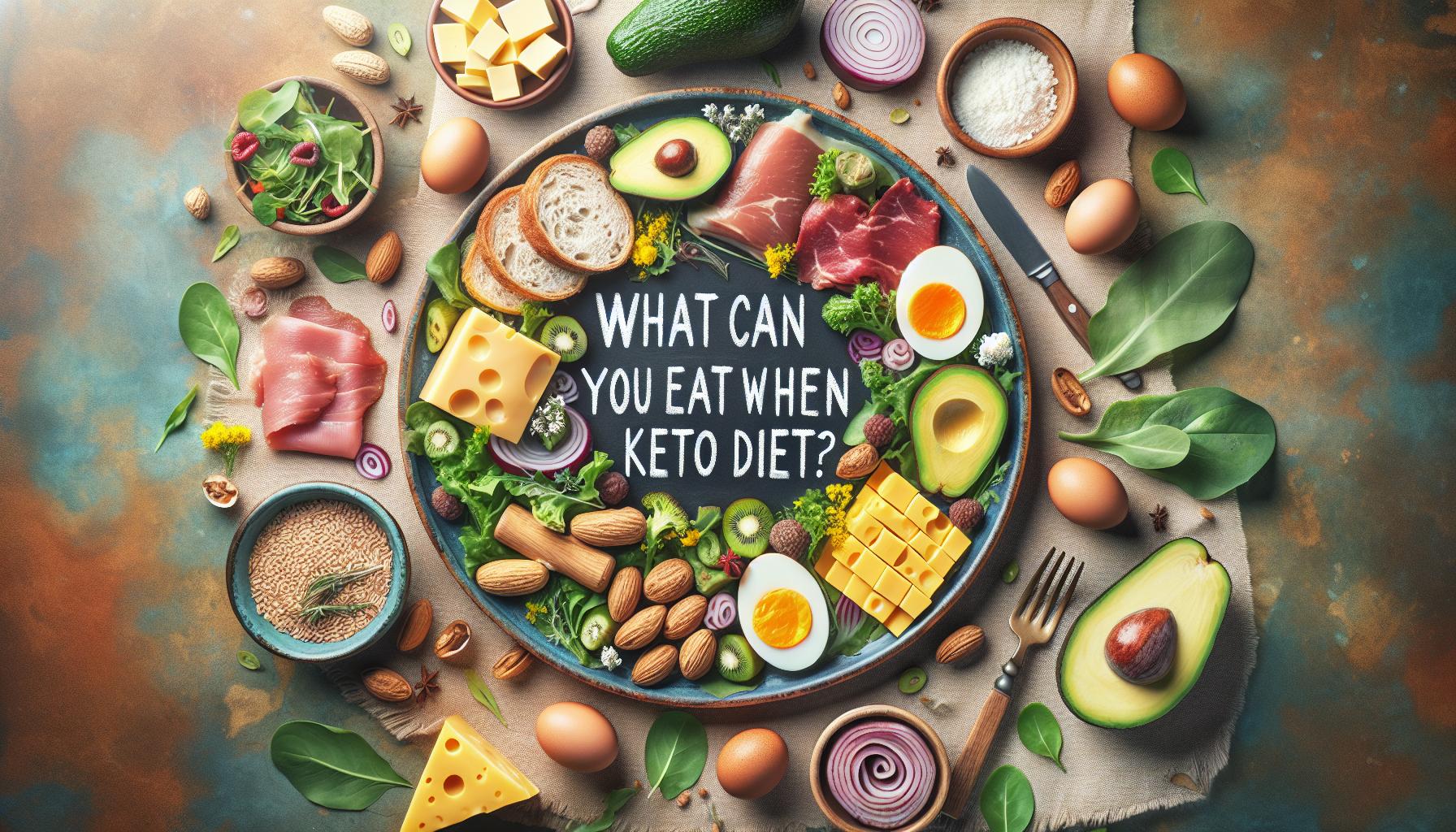
Introduction
Kicking off the keto conversation, you might ask, “What can you eat when on a keto diet?” A concise answer to this question is that the ketogenic diet primarily includes high-fat, moderate-protein, and very low-carb foods. From juicy meats to dairy delights, fatty fishes to mouthwatering avocados, the range is vast and varied. As we embark on this article, we’ll explore the nitty-gritty details of what you actually can munch and crunch into while following a ketogenic lifestyle.
The Keto Diet Basics
The ketogenic diet, commonly known as keto, is a diet regimen anchored in the principle of eating foods high in fat, with a moderate chunk of protein and nearly pulled away from carbohydrates. The spotlight of the keto diet rests unwaveringly on fats, showcasing them as the source of the majority of the calorie intake. A quick glance at the ratios and we’re talking about 60-70% fat, tantamount to a symphony of salmon, a choir of cheese, and a battalion of butter.
Reducing Carbs
Shifting the focus to carbohydrates, a ketogenic diet calls for a significantly reduced intake, asking for a mere 5-10% contribution to your daily calories. So while you might find bread, pasta, and sugary fruits irresistibly delicious, your keto diet gives them the short end of the stick, effectively cutting their lines in the ultimate dietary performance.
Foods to Feast on in Keto
On stage now, we welcome the a-listers of the keto diet, the healthy fats taking center stage, alongside the supporting proteins and the seldom-seen carbs. The healthy fats flaunt avocados, fatty fish, and oils, with supporting roles taken by meats, seafood, and eggs in the protein category.
The Green Room
Vegetable virtuosos, though low in carbs, are not silenced in the keto diet. They skillfully blend the symphony, with leafy greens, cruciferous vegetables, and bell peppers playing their part elegantly. A crowd favorite, avocados also get a solo, stealing the show with their high healthy fat resonance.
Foods to Forgo
Just as some foods dance in the limelight, others must bow out gracefully, kept off our keto stage. Grains, legumes, sugar-sweetened beverages, and many fruits perform their swan songs, being too high in carbs to earn a role in our ketogenic show.
Sweet Surrender
Lastly, landing on desserts may seem like the closing curtain on our keto dinner theater. But the plot thickens! Dark chocolate and berries make surprise guest appearances as low-carb dessert options, ensuring the act closes on a high–and sweet–note.
Conclusion
Exploring the ketogenic diet opens us up to a diverse performance of foods. Reminiscent of a well-directed theater performance, each food has its role to play in maintaining the fat-focused balance of the diet. To sum up, a keto diet is a glorious feast of high-fat, moderate protein, and low-carb foods.
Frequently Asked Questions
1. Can you eat bananas on the keto diet?
No, bananas are generally considered too high in carbohydrates for the keto diet. Instead, opt for keto-friendly fruits such as berries and avocados.
2. Are all vegetables allowed on the keto diet?
Not all vegetables are created equal. Opt for low carb vegetables such as leafy greens, bell peppers, and zucchini.
3. Is cheese part of the keto diet?
Yes, cheese is keto-friendly, and, due to its high-fat content, it’s a popular choice among those following the diet.
4. Can you have milk on the keto diet?
While milk isn’t strictly off-limits, its higher carbohydrate content means it should be consumed sparingly. Instead, consider alternatives such as almond or coconut milk.
5. Are beans allowed on the keto diet?
Most beans are high in carbs and therefore are not ideal for a keto diet. However, you might include them in small quantities if they fit within your daily carb limit.


